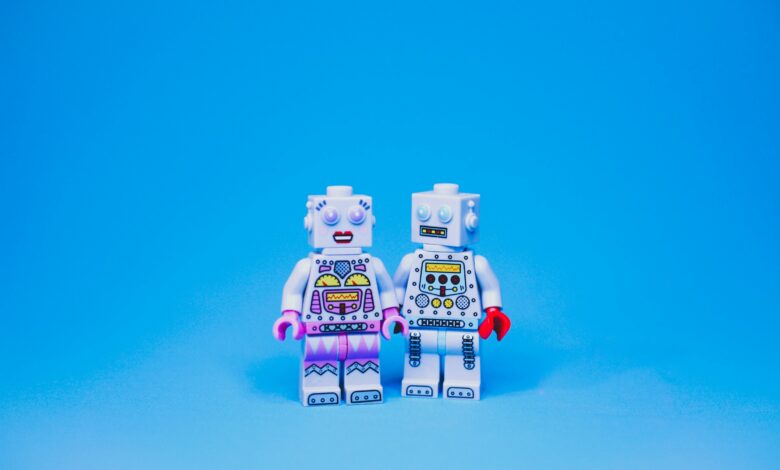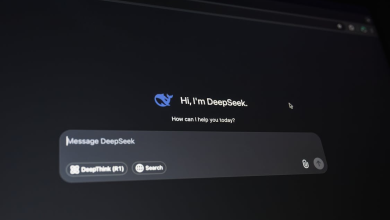
Artificial Intelligence has become a central part of modern technology, and chatbots are one of the most practical and exciting ways people experience AI in daily life. Whether it’s customer support on an e-commerce site, booking tickets through a travel app, or chatting with a personal digital companion, chatbots have become powerful tools for businesses and individuals alike.
If you’ve ever thought, “I want to build a chatbot, but I don’t know where to start,” you’re not alone. Many first-time developers and enthusiasts face the same challenge. The good news is, creating your first AI chatbot is easier than you might think—as long as you understand the right process, tools, and strategies.
In this guide, I’ll take you step-by-step through everything you need to know about building an AI chatbot, from the basics to advanced techniques, and even share a real-life example to inspire your journey.
Why Build an AI Chatbot?
Before we dive into the process, let’s talk about why chatbots are worth building in the first place.
- Customer Support: Businesses use AI chatbots to provide 24/7 assistance to customers, answering FAQs and solving common problems instantly.
- Cost Savings: Instead of hiring large teams of support staff, companies can use chatbots to handle repetitive queries and reduce operational expenses.
- Personal Assistants: Individuals create chatbots for personal productivity, reminders, scheduling, or simply as interactive companions.
- Innovation and Learning: For developers, building a chatbot is a fantastic way to learn about natural language processing (NLP), machine learning, and real-world AI applications.
- Scalability: A chatbot can simultaneously interact with thousands of users—a task no human team could handle efficiently.
Step 1: Define the Purpose of Your Chatbot
The very first step is deciding the main purpose of your chatbot. Without this clarity, you’ll end up building something confusing or ineffective.
Ask yourself:
- Do you want your chatbot to answer FAQs?
- Should it provide personalized recommendations
- Is it a fun project for entertainment or companionship?
- Do you want it integrated with business processes like lead generation or customer service?
For beginners, it’s usually best to start small—perhaps an FAQ bot or a simple assistant that can greet users and answer 10–15 common questions. Once you succeed with the basics, you can scale it into a more advanced AI.
Step 2: Choose the Right Development Approach
There are two main ways to build chatbots:
1. No-Code Platforms
If you’re not a programmer, don’t worry. Tools like Dialogflow, ManyChat, Tidio, and Microsoft Bot Framework let you build functional chatbots without writing much code. You simply drag-and-drop conversation blocks, train intents, and deploy.
Pros:
- Easy to use
- Quick deployment
- Perfect for beginners
Cons:
- Limited customization
- May not scale well for complex AI projects
2. Code-Based Development
If you’re comfortable with programming, building with Python, Rasa, Botpress, or Node.js gives you full control. You can integrate advanced AI models, custom APIs, and machine learning algorithms.
Pros:
- Highly customizable
- More powerful and scalable
- Great learning experience
Cons:
- Requires coding knowledge
- More time-consuming
Step 3: Understand Chatbot Architecture
Every chatbot has a general structure. Here’s what it usually includes:
- User Interface (UI): Where people interact with the bot (e.g., website chat widget, WhatsApp, Facebook Messenger).
- NLP Engine: The brain of your chatbot, responsible for understanding and interpreting user input.
- Dialog Manager: Handles the flow of conversation—deciding how to respond next.
- Database/Knowledge Base: Stores the information your chatbot relies on to answer queries
- Integration Layer: Connects the bot with other services like payment gateways, CRMs, or APIs.
Knowing this architecture helps you design a more effective chatbot, even if you’re starting with simple tools.
Step 4: Designing Conversations
The heart of a chatbot is its ability to carry conversations. A poorly designed chatbot frustrates users, while a well-designed one keeps people engaged.
Here are some tips:
- Start with user questions. Think about what people are most likely to ask.
- Map conversation flows. For each question, design how the chatbot should respond.
- Handle mistakes gracefully. If the bot doesn’t understand, it should say something like, “I’m not sure I got that. Could you try rephrasing?”
- Keep it short and clear. Avoid long, robotic responses.
You can even use flowchart tools like Miro or Lucidchart to visualize your conversation paths before building them.
Step 5: Add Natural Language Processing (NLP)
This is where your chatbot becomes “smart.” NLP allows it to understand human language instead of just fixed commands.
Popular NLP tools include:
- Dialogflow by Google
- Rasa NLU
- spaCy (Python library)
- OpenAI’s GPT models
For example, if a user types: “I need help booking a flight” or “Book me a ticket,” NLP ensures the chatbot recognizes both as the same intent: flight booking.
Step 6: Train Your Chatbot
Like a student, your chatbot learns better with training. You should feed it with as many sample conversations as possible.
Training includes:
- Defining Intents: The goal behind the user’s message (e.g., order food, reset password).
- Entities: Specific data within the message (e.g., “pizza,” “9 PM,” “New York”).
- Context Handling: Understanding conversations across multiple turns.
The more training data your chatbot has, the smarter and more reliable it becomes.
Step 7: Testing and Iteration
Never launch a chatbot without testing.
- Chat with it yourself in different ways.
- Ask friends to try breaking it with unexpected questions.
- Collect feedback to see where it struggles.
Iterative improvement is the secret to building a great AI chatbot. Every interaction helps you refine its performance.
Step 8: Deployment
Once you’re satisfied, it’s time to make your chatbot available. You can:
- Embed it on your website as a live chat widget.
- Deploy it on messaging platforms like WhatsApp, Telegram, or Facebook Messenger.
- Use it in mobile apps for customer service or personal assistance.
Many chatbot frameworks provide easy deployment integrations, so you won’t have to start from scratch.
Step 9: Maintain and Scale
Chatbots aren’t “set and forget.” They need regular updates, just like apps.
- Keep updating your knowledge base.
- Train the chatbot on new queries.
- Add features based on user needs.
As your chatbot gains users, you might integrate advanced features like voice recognition, sentiment analysis, or even payment gateways.
Real-Life Example: DreamDolls
A close friend of mine once created his own AI chatbot project called DreamDolls. What started as a small experiment quickly turned into something much bigger. Initially, it was just a fun side project, but soon it grew into an interactive AI companion that many users began engaging with daily.
This example shows that you don’t need to be a big company to build something impactful. Even a beginner’s project, when nurtured with consistent effort, can grow into a useful AI solution that people genuinely enjoy.
Final Thoughts
Building your first AI chatbot can feel overwhelming at first, but once you break it down into steps, the process becomes both exciting and achievable. Start by defining your chatbot’s purpose, choose the right tools, design clear conversations, integrate NLP for intelligence, and keep improving through training and testing.
Remember, the best chatbots weren’t perfect when they launched. They improved with every conversation, every feedback loop, and every update. Yours can too.
So, don’t wait—take that first step today. Whether it’s a business assistant, a personal productivity bot, or even a creative project like DreamDolls, your chatbot could be the beginning of something far bigger than you imagined.



